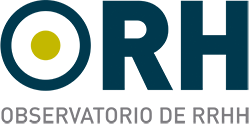

Agile…what is it really? Over the past 5 plus years, many organizations have decided to undertake some sort of agile transformation hoping to achieve the perceived benefits of faster delivery of products to market, reduced costs, and happier customers. They read the Agile Manifesto (agilemanifesto.org) and it becomes their mantra for delivery and make the decision we are going to «go agile».
The team members go to training to learn the «how» typically centered around a type of framework, such as Scrum, SAFe (Scaled Agile Framework) or a method such as Kanban. Then off to the races they go chasing the Agile Dream. They create cross-functional teams, possibly set up team rooms for collaboration and begin building a backlog of product wishes. Small slivers of product get produced and we begin to get feedback from our customers as we navigate the nuances of this new way of working. As teams get moving, they see a lift in productivity but eventually begin to run into roadblocks because the organization typically hasn’t made the shift and the organizational gravity of their processes causes the teams to stall. This is what I call «big A» Agile. We pick a framework, adopt a few of the agile principles either at a team level, or maybe a project or product level but the rest of our organization continues as usual. Basically, we are «doing agile» at this point.
The shift I am talking about is the organizational shift needed to «be agile» to really reap the benefits. This is where the entire organization commits to the concept of agility over Agile by changing their mindset and adapting their processes. Being agile requires an «all in» effort where Business, IT, Finance, Legal, HR, Marketing, etc. work together to become cross functional in nature and operating. The organization takes systems thinking view to make sure our work and efforts are to benefit the organization as a whole and not on behalf of the department or team. Managers make the shift into being servant leaders to support the teams. We live and breathe the values of trust, transparency, autonomy, and accountability across the organization. We look at our processes and work to streamline them to make them easier on behalf of the customer and the organization and we become focused on delivering outcomes over outputs. I call this «little a» agility.
While many of you may be saying, sounds nice and maybe it can work for a startup like Uber or a tech company such as Google or Amazon, but it will never happen at my company, I beg to differ. You can make this dream a reality. It is not easy, and it does take an «all in” approach across the organization and levels of leadership. First, the organization needs to develop a vision and common understanding when we say the word agility. Second, all areas need to create a prioritized backlog of opportunities for agility, possibly figure out how to improve them cross functionally, and begin tackling them. Third, implement metrics which support agility and reward the right behavior such as team compensation based on delivering value, reducing cycle times when it comes to various processes which are currently a bottleneck (vendor onboarding, procurement, legal reviews, etc.), and customer satisfaction and employee satisfaction become front and center at the heart of everything we do. Lastly, we need to provide training and ongoing coaching throughout the levels within the organization because for some (if not many) this is going to be challenging. We are asking individuals to change the way they think, operate and how they are being measured.
I have been fortunate to see this dream become a reality in various companies I have worked for as both an employee and consultant and so have many of my peers in the agile community. These organizations become workplaces where individuals love to come to work every day, they feel appreciated and empowered, and they understand the connection of their work to the company and the impact to the customer. In the wise words of Ben Franca, «The distance between your dreams and reality is called action». My challenge to you… put the agile dream into action.
Betsy Kauffman (CSM, CSPO, PSM, PMP, PMI-ACP, SPC4, ICP-APM, ICP-ACC, ICP-ATF, ICP-ATL, Co-Active® Trained Coach) is a Personal, Leadership, and Organizational Agility Coach with more than 18 years’ experience working with high performing teams. She has held various roles working as a Business Analyst, Project Manager, Program Manager, Scrum Master, Senior Scrum Master, and Agile Coach across several sectors including healthcare, retail, energy, entertainment and financial. As a Leadership Coach, she is responsible for coaching, individuals and teams at the executive, portfolio and team levels for several Fortune 500 organizations. Betsy is one of seven authors for the Agile Practice Guide published in conjunction with the Project Management Institute (PMI)® in September 2017. Betsy is currently serving as a Steering Committee member for PMI’s Global Practice Analysis team and a development team member for the PMBOK v.7.
Betsy is actively involved in the community and enjoys presenting on a range of topics regarding agile transformations, personal agility, and the agile values and principles.


